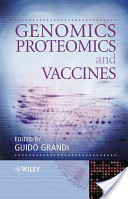


Author Name = Guido Grand
Realeased On = Releases On 2004
While the series of the human genome series has hit the headline, wide use of this for practical application is still to come. Genomic and post-genomic technologies applied to viral and bacterial pathogens, which are almost equally important from a scientific viewpoint, have the possible to be translated into useful products and process much more fast.
The term proteomics was first coin in 1997 to make an analogy with genomics, the study of the genes. The word proteome is a blend of protein and genome, and was coin by Marc Wilkins in 1994 while working on the concept as a PhD scholar.The proteome is the whole complement of proteins, It is at the present known that mRNA is not forever translated into protein, and the quantity of protein shaped for a given amount of mRNA depends on the gene it is transcribed from and on the current physiological state of the cell. Proteomics confirms the presence of the protein and provides a direct measure of the amount present.
Scientists are very paying attention in proteomics since it gives a much better sympathetic of an organism than genomics. First, the level of record of a gene gives only a rough approximation of its level of look into a protein.
An mRNA shaped in abundance may be tainted rapidly or translated incompetently, resultant in a small amount of protein. Second, as mentioned above many proteins experience post-translational modifications that deeply affect their activities; for instance some proteins are not lively until they become phosphorylated.Methods such as phosphoproteomics and glycoproteomics are used to learn post-translational modifications. Third, many transcript give rise to more than one protein, through alternative splicing or alternative post-translational modifications. Fourth, many proteins form complexes with other proteins or RNA molecules, and only function in the presence of these other molecules. lastly, protein degradation rate plays an significant role in protein contented.